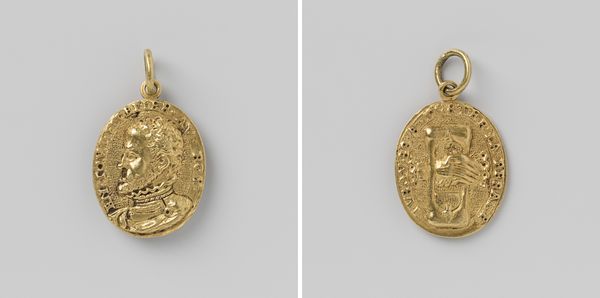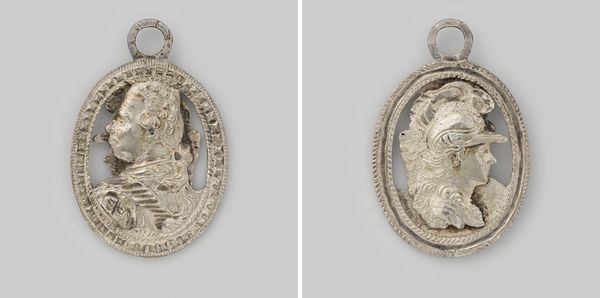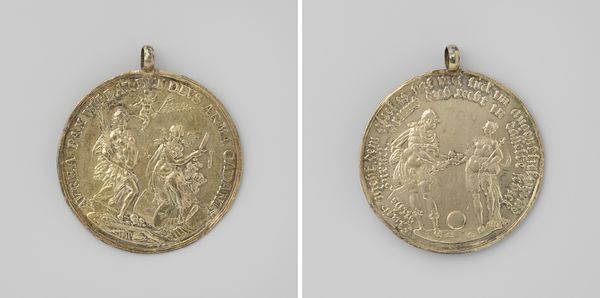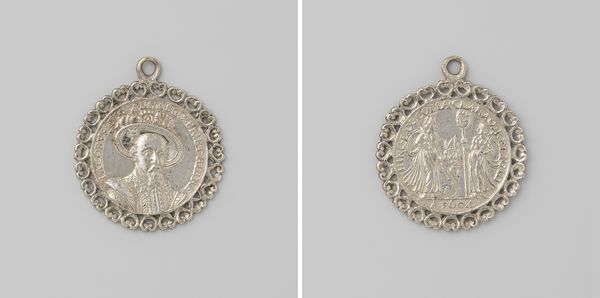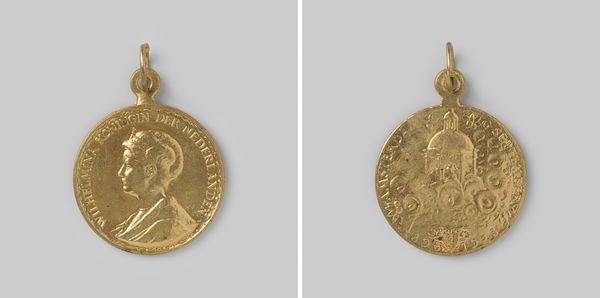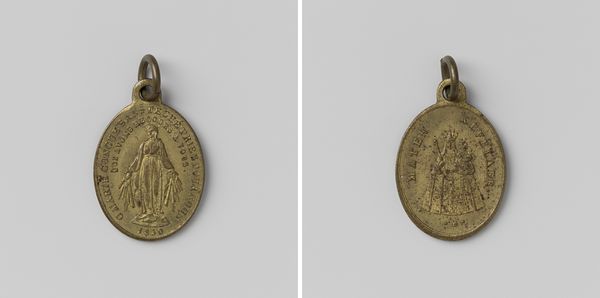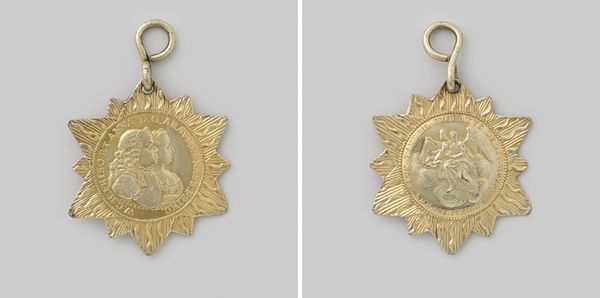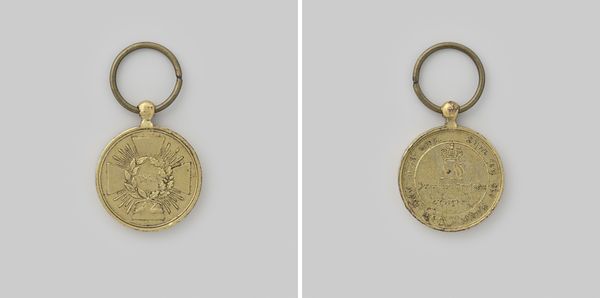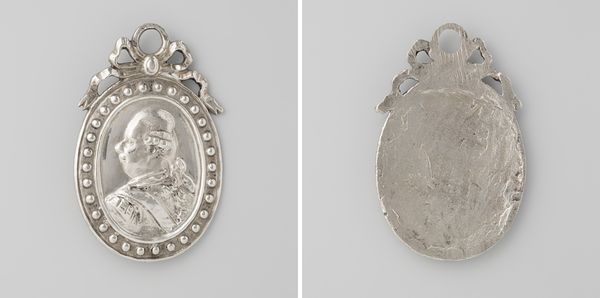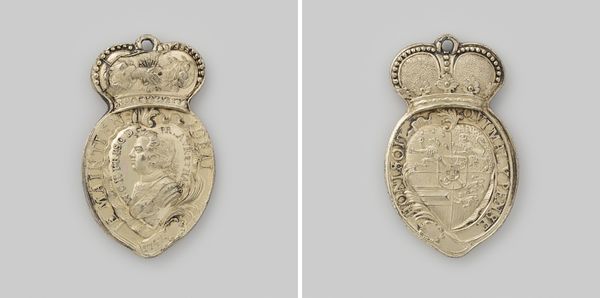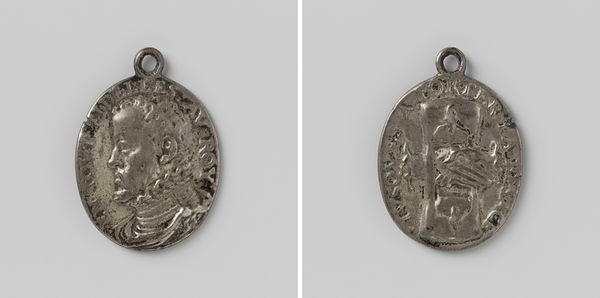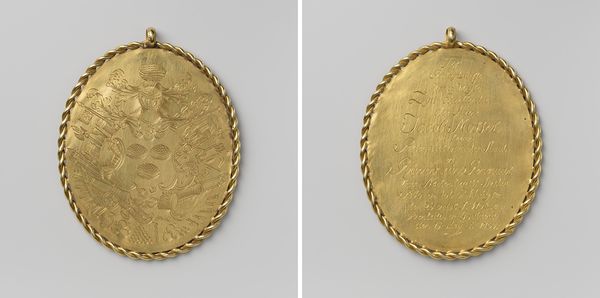
Willem V en Wilhelmina van Pruisen, prins en prinses van Oranje-Nassau 1787
0:00
0:00
metal, relief
#
portrait
#
neoclacissism
#
metal
#
relief
#
miniature
Dimensions: length 3.4 cm, length 2.5 cm, width 1.9 cm, weight 7.17 gr
Copyright: Rijks Museum: Open Domain
Curator: Here we have a relief from 1787 featuring Willem V and Wilhelmina of Prussia, the Prince and Princess of Orange-Nassau. It is crafted in metal and takes the form of a miniature portrait. Editor: Immediately, I'm struck by how intimate these feel. Though clearly designed to project power, the miniature size invites a closer, more personal look. Almost like carrying a talisman. Curator: Exactly! Court culture used portrait miniatures to broadcast certain attributes. Consider the rigid class and gender structures within 18th-century Netherlands. These portraits performed symbolic work, emphasizing lineage and, indeed, divinely ordained rulership. The very aesthetic signals adherence to neoclassicism – all the restraint and order the style implies. Editor: And those symbols work! Look at Wilhelmina's classical hairstyle, crowned with laurel. It evokes power, victory, and maybe a touch of republican virtue, wrapped into a monarchical package. What’s also interesting is how standardized the profiles are, nearly identical save for hairstyle, echoing coins of the realm and stamping authority through recognizable faces. Curator: Absolutely, Wilhelmina of Prussia holds a more powerful place in history, however. As one of the most educated woman of her time she held sway over her husband and became entangled in Dutch politics. By highlighting these figures within the broader political turbulence, and, especially in our contemporary moment, it emphasizes the historical role gender plays in dictating the access one may be afforded. Editor: So it’s fascinating how those symbols of authority get challenged. Curator: Absolutely, challenging not in the least, since after all this relic, now an object of study, continues to broadcast images, even ones potentially not envisioned during its creation. Editor: It is precisely this continuous echo and transmutation that fascinates me about visual imagery. Each era reinterprets the symbols in new and compelling ways. Curator: These subtle metal portraits can initiate fascinating investigations into gender dynamics within 18th-century Dutch society. Editor: The dual portraits give us much to ponder about enduring legacies, visible authority, and power relations through iconography.
Comments
No comments
Be the first to comment and join the conversation on the ultimate creative platform.
